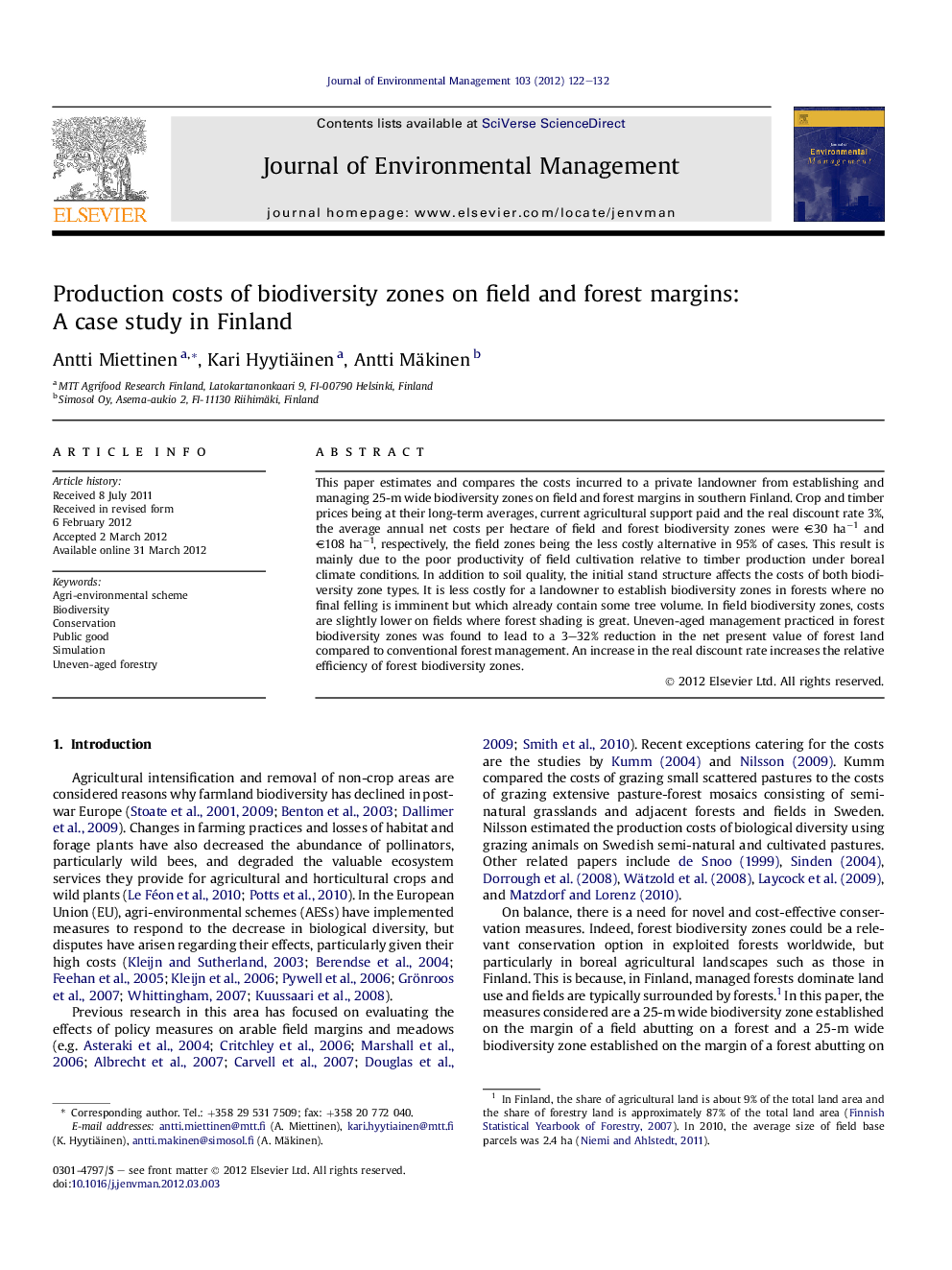| Article ID | Journal | Published Year | Pages | File Type |
|---|---|---|---|---|
| 1056649 | Journal of Environmental Management | 2012 | 11 Pages |
This paper estimates and compares the costs incurred to a private landowner from establishing and managing 25-m wide biodiversity zones on field and forest margins in southern Finland. Crop and timber prices being at their long-term averages, current agricultural support paid and the real discount rate 3%, the average annual net costs per hectare of field and forest biodiversity zones were €30 ha−1 and €108 ha−1, respectively, the field zones being the less costly alternative in 95% of cases. This result is mainly due to the poor productivity of field cultivation relative to timber production under boreal climate conditions. In addition to soil quality, the initial stand structure affects the costs of both biodiversity zone types. It is less costly for a landowner to establish biodiversity zones in forests where no final felling is imminent but which already contain some tree volume. In field biodiversity zones, costs are slightly lower on fields where forest shading is great. Uneven-aged management practiced in forest biodiversity zones was found to lead to a 3–32% reduction in the net present value of forest land compared to conventional forest management. An increase in the real discount rate increases the relative efficiency of forest biodiversity zones.
► We calculated production costs of biodiversity zones on field and forest margins. ► Average annual net costs per hectare were lower on field biodiversity zones. ► Recent rise in crop prices has lowered relative costs of forest biodiversity zones. ► High discount rate makes forest biodiversity zones relatively less costly. ► Loss from uneven-aged forestry is 3–32% compared to even-aged forestry.
